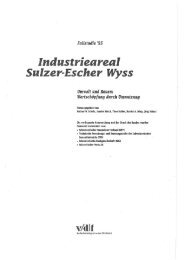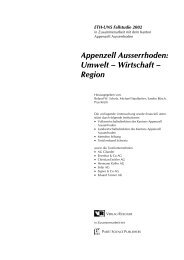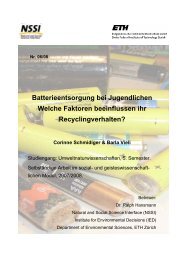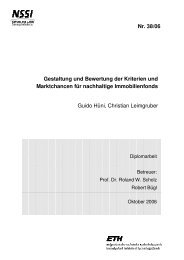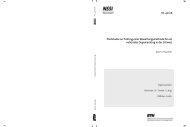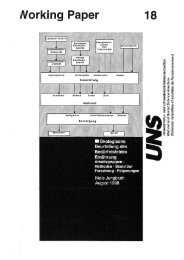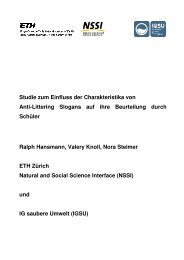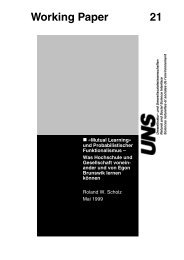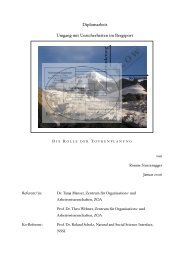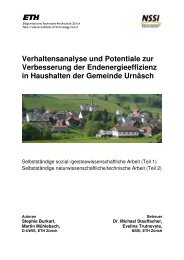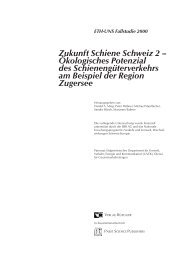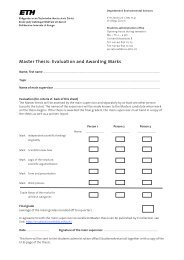The Paradigm of Human-Environment Systems - Natural and Social ...
The Paradigm of Human-Environment Systems - Natural and Social ...
The Paradigm of Human-Environment Systems - Natural and Social ...
You also want an ePaper? Increase the reach of your titles
YUMPU automatically turns print PDFs into web optimized ePapers that Google loves.
Rol<strong>and</strong> W. Scholz & Claudia Binder<br />
Until World War II infectious diseases were the primary cause <strong>of</strong> death in Europe. Cholera,<br />
which was prevalent in the mid-19 th century, was considered to be the follow up disease <strong>of</strong><br />
the Black Death. Cholera is an acute intestinal infection caused by the bacterium Vibrio Cholerea.<br />
It has a short incubation period, from less than one day to five days, <strong>and</strong> produces an en-<br />
terotoxin, that causes a watery diarrhea that can quickly lead to severe dehydration <strong>and</strong> death<br />
if not treated promptly. It is transmitted by contaminated water <strong>and</strong> food. Large outbreaks are<br />
usually caused by a contaminated water supply (WHO, 2003).<br />
It is believed that the first outbreaks <strong>of</strong> cholera can be traced back to Ancient Greece (460<br />
to 377 BC), as Hippocrates described a similar disease in his writings (Cook, 1996, p. 19). <strong>The</strong> first<br />
p<strong>and</strong>emic outbreak originated in 1817 in Calcutta, India, <strong>and</strong> spread to China, Russia (1830), Pol<strong>and</strong>,<br />
Germany, etc. In 1832 it also reached the US (Brockhaus, 1865, p. 455). It was recognized<br />
that cholera spread mostly along traffic routes, in particular rivers. <strong>The</strong> 7 th p<strong>and</strong>emic originated<br />
in 1961 in Indonesia <strong>and</strong>, through sailors, entered to South America for the first time in 1991 in<br />
Peru (Islam, Drasar, & Sack, 1996). Cholera can, thus, be seen to be a result <strong>of</strong> another advancement,<br />
the globalization <strong>of</strong> material <strong>and</strong> human fluxes. It is estimated that 2.5 million<br />
people died <strong>of</strong> cholera in 1997 (Weiss, in press).<br />
We reconstruct the regulatory mechanisms related to cholera epidemic along the proposed<br />
process structure model (Figure 1). We are particularly interested in the progress <strong>of</strong> underst<strong>and</strong>ing<br />
the genesis <strong>of</strong> cholera <strong>and</strong> the strategies formed relating to the evolving environ-<br />
mental awareness <strong>of</strong> physicians <strong>and</strong> society.<br />
Goal formation. Three goals can be identified: (i) avoiding infection, (ii) preventing the<br />
spread <strong>of</strong> the disease, <strong>and</strong> (iii) curing sick people. In principle, goals (i) <strong>and</strong> (iii) apply to all levels<br />
in the human system, whereas goal (ii) is relevant only to the societal <strong>and</strong> group level. Obviously<br />
curing itself occurs at the cell <strong>and</strong> organ level as known from immunology.<br />
Strategy formation. In 19 th century Europe, scientists <strong>and</strong> decision makers had already<br />
learned from the Black Death epidemic. <strong>The</strong>y had also developed a structured, hypothesis<br />
based research pattern, which they applied to the new situation (Goltz, 1998, p. 213). We focus<br />
on the first two goals <strong>and</strong> omit the discussion <strong>of</strong> the medical treatment. Strategy formation<br />
was based on the miasma theory (Zweifel, 1989). This theory dominated strategy formation,<br />
even though at that time Snow, in 1849, had already shown that cholera infection was related<br />
to the consumption <strong>of</strong> contaminated drinking water (Leary, 1998, p. 129). That is, at this stage,<br />
water was not included in the environmental awareness as a transmission media for patho-<br />
gens as the focus was on soil <strong>and</strong> air. If water appeared to be clean <strong>and</strong> clear, tasted well, <strong>and</strong><br />
was without adverse smell, then it was considered safe.<br />
14 April 2003



